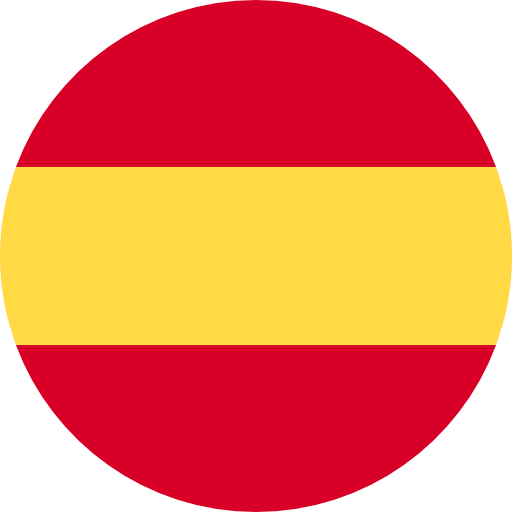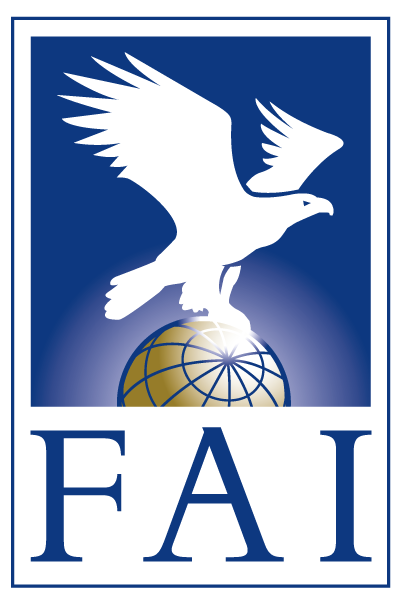16th Coupe Aéronautique Gordon Bennett
Detroit, United States, September 10, 1927
Results
| Rank | Pilots | Country | Score | Duration | Landing |
|---|---|---|---|---|---|
| 1 | Edward J. Hill Arthur G. Schlosser |  USA USA | 1198.00 km | 48:00:00 | Baxley, Georgia (USA) |
| 2 | Hugo Kaulen Alexander Dahl |  GER GER | 1106.00 km | 48:00:00 | |
| 3 | Ward T. van Orman Walter T. Morton |  USA USA | 1102.00 km | 51:31:00 | Georgia (USA) |
| 4 | Georges M. Blanchet le Gallee |  FRA FRA | 1091.00 km | 00:00:00 | |
| 5 | E. Maldonado M. Molas |  ESP ESP | 1038.00 km | 00:00:00 | |
| 6 | Ernest Demuyter Pierre de Soete |  BEL BEL | 965.00 km | 31:00:00 | Florence (USA) |
| 7 | Ferdinand Eimermacher R. Predeck |  GER GER | 925.00 km | 40:00:00 | Prosp. (USA) |
| 8 | Domenico Leone Ugo Medori |  ITA ITA | 917.00 km | 00:00:00 | |
| 9 | Maurice Bienaime Alexander Veenstra |  FRA FRA | 888.00 km | 00:00:00 | |
| 10 | William E. Kepner William O. Eareckson |  USA USA | 852.00 km | 00:00:00 | |
| 11 | Philippe Quersin M. Theis |  BEL BEL | 852.00 km | 00:00:00 | |
| 12 | Eraldo Ilari G. Paonessa |  ITA ITA | 804.00 km | 00:00:00 | |
| 13 | Ernest L. Maag Ernie Nägeli |  SUI SUI | 748.00 km | 22:00:00 | Statesville, North Carolina (USA) |
| 14 | G.F. Maeger R.S. Booth |  GBR GBR | 724.00 km | 00:00:00 | |
| 15 | R. Halben Hugo Kaulen jr. |  GER GER | 80.00 km | 04:00:00 | Sugar Island, Michigan (USA) |
Book Article
From the Book: Die Gordon Bennett Ballon Rennen
(The Gordon Bennett Races) by Ulrich Hohmann Sr
Start: Detroit, September 10th
The long years without German participation in this race were over, the ordered isolation had finally finished. But who should compete for Germany? From the "old campaigners", who had gathered experiences in the race before the First World War, Hans Berliner, Ferdinand Eimermacher and Hugo Kaulen were still active. Besides them, also new names had appeared and had drawn attention in national competitions or in normal long and far flights. There was Dr. Fritz Pratje from Münster, Erich Leimkugel from Essen, Dr. Halben from Hamburg, Robert Petschow from Berlin and Otto Bertram from Chemnitz. Some of them we will meet later. At Easter 1927, 9 balloons flew from Gelsenkirchen for a pre-selection, won by Eimermacher ahead of Dr. Halben and Hugo Kaulen. This flight brought them to the south of France in 35 hours. Those first three were nominated with an oversized hope for success, so the newspaper "Vossische Zeitung" wrote about a "strong overrating of the prospects in Germany" a few days before launch. Eimermacher and Kaulen met old acquaintances. They still knew well the French Maurice Bienaime and Georges Blanchet from the old times, as well as Ernest Demuyter, who went for his 10th Gordon Bennett Race.
Demuyter is now 44 years of age (born 1893), got his pilots licence at the age of 18 and had already done two solo flights prior to his check out flight. In 1912 he was rated a fixed wing pilot, and in the First World War he was on duty as pilot of airplanes and airships. We have already learned about his success in the Gordon Bennett Races, so let's have a look to the other pilots. (Demuyter died in February 1963, aged 70.)
George Blanchet was the oldest balloon pilot in France in those days. He had logged more than 400 flights, lots of them as night flights. This year, he had already flown from Paris to Spain with a little balloon, covering more than 800 kilometres in 23 hours and crossing the Pyrenees with the 3400 meters high Maladetta. Maurice Bienaime was a stockbroker in Paris and held all licences of aviation in those days, for balloons, airships and planes. In 1913 he had flown from Paris to the Black Sea in 48 hours, setting up a French record for duration. In the year 1912 he had reached an altitude of 10.000 m with a balloon and set up a world record for distance with 2191 km in 45 hours and 47 minutes, which lasted only until February 8th 1914, when Hans Berliner surpassed it with 3052 kilometres.
Hugo Kaulen sr. (his son flew in the same race as co-pilot with Dr. Halben, balloon ERNST BRANDENBURG) was known by everybody and considered to be one of the favourites. He still held the world record for duration with 87 hours (and should keep it for long), set up in a flight from December 13th to 17th 1913.
If Ferdinand Eimermacher was less known to many Americans before the race, this changed now. His long greying full beard soon became a marvelled trademark. Newspapers wrote articles about the beard, 500 Dollars were offered if he would shave. He did not think a second about this, the pictures, spread by the press, contributed to his fame. He was 45 years of age (born December 10th 1881), had done his first balloon flight on his 28th birthday in the year 1909, had got his licence in June 1910 after a lot of difficulties (ballooning was reserved for officers on duty in those days, he became the first "civil pilot") and then started to become a competition loving pilot. In the pre-selective flights in 1912 he had finished with one 1st and one 2ndplace, in March 1913 he had flown 968 km from Münster to East Prussia in 6 ½ hours at an average speed of 148 km/h setting up an unofficial world record for speed in a balloon. (Speed is not counted for records in ballooning). Ferdinand Eimermacher had achieved great merits for ballooning in Germany since 1922, when he revived this sport with an old balloon, purchased from the army, and trained a number of well performing pilots, but this was in the time of the isolation of German ballooning. His international career started now and helped him receive a lot of recognition.
In those days, fixed wing flying surpasses some of the ballooning records or comes close to them. On May 20th 1927 Charles A. Lindbergh took off in Long Island for the first solo flight across the ocean, landing in Paris after 33 hours and 29 minutes. In August 1927 Germans Edzard and Risticz manage to put the world record for duration up to 52 hours and 23 minutes. On September 3rd newspapers report that 63 year old Princess of Löwenstein-Wertheim-Freudenberg and her companion are lost over the Atlantic on a flight from Windsor. Some kind of a fever to fly over the ocean had broken out, already 25 pilots had lost their lives. The parliament in Canada prepares a law, to prohibit ocean flights if they seem to have no chance for success. Seven months later (April 12th to 13th 1928) Hermann Köhl, Ehrenfried Günther Freiherr von Hünefeld and James C. Fitzmaurice are the first to cross the Atlantic from east to west with the single engine Junkers monoplane BREMEN.
The organisation of the Gordon Bennett Race wasn't taken too serious by the Americans. Even in 1910 several things had not been prepared. Also in this year, after several changes of the date and the place for launch, decision was made in the last hour. Thanks to the car king of Detroit, Henry Ford, the race could be finally launched from his private airfield.
15 balloons are prepared on this Saturday evening. Besides the three Americans three Germans and two crews of each France, Belgium, Italy and Switzerland as well as one crew from Spain had taken the burden of the expensive trip to the States. The financial problem had let to curiosities with some competitors. They took their sponsors as co-pilots with them, helping them to fame and recognition. Swiss Ernest Maag started together with the Zurich-born, now US resident world boxing champion in lightweight, Ernie Nageli. Ernest Demuyter had chosen sculptor Pierre de Soete, a sportsman full of self-confidence and a brilliant sponsor. Their handicap was, that they had no experience at all in ballooning. It is said, that Nageli had never before flown in any kind of an aircraft.
Of Demuyter's BELGICA the equipment of the basket is handed down. He took off with 23 bags of ballast with 15 kilograms each inside the basket, 24 bags with 25 kilograms each tied to the basket from the outside, four cylinders of oxygen, one cylinder of hydrogen, a bottle of champagne, a vacuum flask with coffee, a zodiac, a radio receiver, a bag full of maps and several bags for the food, that was all. Variometer, barograph, altimeter and compass was a matter of course, radios had not been developed for balloons and of such new items like transponder, VOR or GPS nobody even dreamt.
Henry Ford's son Etzel gave the signal for launch. "Seven, six, five, four, three, two, one" he counted down, the an enormous bang of a pistol was heard. Maldonado/Molas from Spain launched first. Among the German balloons ERNST BRANDENBURG with Dr. Halben/Kaulen jr. was the first, their take off was guided by the band with "Es braust ein Ruf wie Donnerhall", the German national anthem had not been played for 14 years. Ferdinand Eimermacher reported the mistake. When his balloon launched as number 10, the right anthem had been found.
The flight first headed to the east, then turned south at about 700 meters above ground, leading across the Lake Erie in its longest expansion. American airship GOODYEAR accompanied the balloons on the first part of their flight. After a little less than four hours, a horrible thunderstorm came up, forcing ERNST BRANDENBURG to land on "Sugar Island" in the Lake Erie, where the crew had a solemn welcome by the visitors of the health resort. MÜNSTER VIII flew directly into the thunderstorm. Eimermacher and Predeck believed to be close to their end and to have the balloon turned into flames any moment, but suddenly it was all over. Only some lightening in the distance reminded them of the danger they had come through.
On Sunday, most of the balloons, having over flown the thunderstorm in high altitudes, passed along the towns of Columbus, Dayton and Cincinnati in Ohio with visual contact to each other. The Ohio River was crossed by Eimermacher at Ripley, having still 32 bags of ballast left. Over Kentucky they were above a layer of clouds in the hot beams of the sun, hoping to reach the Gulf of Mexico. But before, they had to pass over the Appalachian mountains, which they reached in the evening. Exactly above the canyons and huge mountains the wind stopped and no altitude they tried brought them any further. It was driving them to despair, bag after bag of the valuable ballast went overboard, followed by the dispensable part of the equipment. Even the little supply of Brandy and wine flew out of the basket undrunk (those who knew Ferdinand Eimermacher, know what a big sacrifice this was for him). The night passed, no kilometre more they had done. First the rising sun pulled them up to 6000 meters and out of the mountains. Their oxygen tanks had gone overboard in the mountains (before the Brandy), now they were missed. The balloon went into a fall by itself, so at about 4000 meters they gained back consciousness and then detected, that the wind had turned and they were driven to the east northeast, back in the direction of their launch. In the middle of a cotton field, being just harvested, they came back to earth. They had landed in South Carolina on a lonely farm, more than 10 kilometres away from the town of Prosperity. How lonesome this area was, can be seen by the number of inhabitants of this "town": just 100.
By car and train they travelled back to New York via Newberry, Columbia and Washington. From there they went home by ship 10 days later.
What had happened to the others? Demuyter logged lightening in the clouds up to 2.500 meters in the first night, so he decided to fly lower. The other balloons over flew the thunderstorm. Demuyter's landing was involuntarily early. After 31 hours of flight his trail rope got caught in tree tops. In vain he struggled to free himself. Even some woodcutters on the ground could not help him. He had to be satisfied with rank 6. Even being nine hours less in the air than Eimermacher/Predeck, he made 40 kilometres more. So Demuyter had managed again, like often before, to find the fastest layer. 17 to 20 hours more were needed by those on the first ranks to make between 60 and 230 kilometres more.
Rank 2 of the Germans Hugo Kaulen sr. and Alexander Dahl was the best result since the victory of Gericke in 1911. They did not make much noise about this, but surely were proud of their performance. They really could be. The newspaper "Münsteraner Anzeiger" explains to its readers, why:
"Talking about the two German balloons BARMEN and MÜNSTER VIII it must be remarked, that their results must be called outstanding, if compared with the other competitors and their equipment. While the German balloons were made from the solid, but heavy, proven double crossed cotton fabric with a layer of rubber rolled in between, most of the other balloons, especially those of the Americans, were made from a very light, only once varnished silk cloth and specially designed for this race. The costs for such a silk balloon, living only for a few flights because of its thin varnish, could not be taken into consideration by the Germans. Our balloons, on which the envelope costs already around 10.000 marks, can stand about 80 to 100 flights, if maintained well. Also, in some of the other balloons, the net is not tied from hemp like ours but from strings of silk. So these balloons, of which the costs for net and envelope can be estimated at not less than 30.000 marks, had of course much less weight and could take with them 60 - 80 bags of ballast, while for example the balloon BARMEN launched with only 36 bags. Also the other costs are not important for some other countries, for they are partially taken by the military. As everybody knows, here in Germany our Reichswehr may not even possess balloons in 1927. Another advantage of the other countries was, that their pilots mostly come from the officers of the airship battalions, who spend half of their life flying balloons, while our pilots come from the circle of factory owners, doctors and editors, who can fly balloons only some times during their hours of leisure. It should be considered, if not in ballooning, at least in the Gordon Bennett Race, a separation between amateurs and professionals as in other kinds of sports have done".
So far this newspaper article. We will meet the problems mentioned there again and again in the following races, and we already know them from the past races.
With the victory of Edward J. Hill/Arthur G. Schlosser the Americans created the conditions to get final possession of the second Gordon Bennett Cup for their country in the next year.

